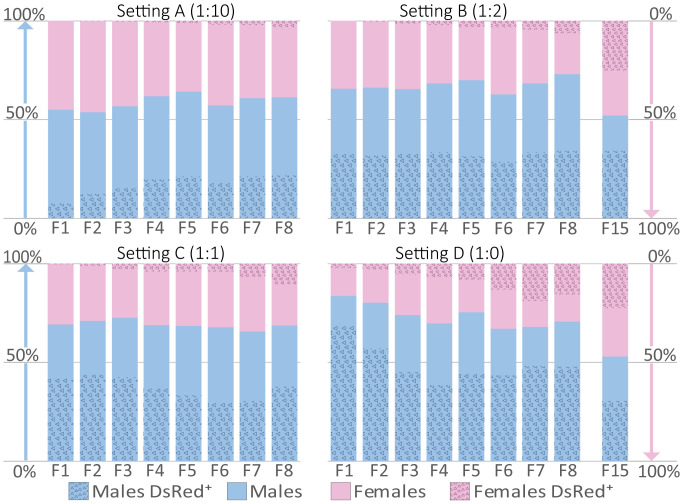Fig. 3.
Dynamics of sex ratio and indicated resistance allele spread in population experiments. w− virgins were crossed with various ratios of CHE (tranCHE/+) and wild-type (w−) males (settings A–D). For each setting five replicates were carried out (SI Appendix, Fig. S6). Progeny were screened for sex and the presence of the DsRed eye marker for up to 15 generations. In setting D, where only tranCHE males were used, a sex ratio of over 80% males was achieved within one generation, indicating the collapse potential of this forced male offspring-only system. In XX embryos, tranCHE attacks the wild-type tra locus in somatic cells, resulting in intersex individuals (SI Appendix, Fig. S2). Thus, only females carrying nonfunctional defective tranCHE or drive-resistant functional traRst alleles can show the DsRed marker. Therefore, the DsRed marker serves as an indicator for the presence of the traRst allele in females, and the rise in the percentage of DsRed females indicates the spread of resistance in the population. Screening the F15 progeny in settings B and D showed that the populations adapted to the presence of the tranCHE homing allele with the female sex ratio returning to about 50% (SI Appendix, Fig. S6).

